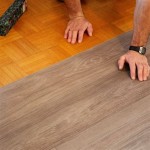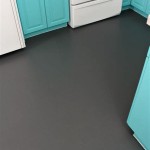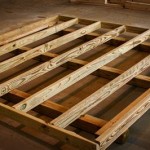Installing Bamboo Flooring: A Comprehensive Step-By-Step Guide
Transform your home's interior with the beauty and sustainability of bamboo flooring. Its durability, warmth, and eco-friendliness make it an excellent choice for a wide range of spaces. Whether you're a seasoned DIYer or a first-time installer, this comprehensive guide will simplify the process of installing bamboo flooring, providing you with clear step-by-step instructions to ensure a successful and satisfying outcome.
Tools and Materials You'll Need:
- Bamboo flooring planks
- Underlayment
- Foam tape (optional)
- Measuring tape
- Tapping block
- Hammer
- Pry bar or crowbar
- Circular saw or miter saw
- Safety glasses
- Dust mask
Step 1: Preparation
Begin by clearing the work area and removing all furniture and fixtures. Ensure that the subfloor is level, dry, and clean. Any unevenness or imperfections should be addressed to avoid affecting the final installation.
Step 2: Installing Underlayment
Underlayment provides a moisture barrier, sound insulation, and added comfort underfoot. Roll out the underlayment over the subfloor, ensuring that the edges overlap slightly. Secure it with duct tape or staples.
Step 3: Laying Out the Flooring
Start by measuring the room and determining the layout of the planks. The planks can be installed in various patterns, such as straight, staggered, or herringbone. Allow for a 1/2-inch expansion gap around the perimeter of the room to account for expansion and contraction.
Step 4: Installing the First Row
Place spacers along the walls to maintain the expansion gap. Begin installing the first row of planks along the longest wall. Tap the planks together using a tapping block and hammer, ensuring they fit tightly. Use a pry bar or crowbar to gently pry any stuck planks into place.
Step 5: Continuing the Installation
Once the first row is complete, continue installing the subsequent rows in the same manner. Stagger the joints between rows to enhance stability. Cut the planks to fit around obstacles, such as doorways or corners, using a circular saw or miter saw.
Step 6: Applying Foam Tape (Optional)
For added stability, apply foam tape to the edges of the planks. This helps prevent movement and creaking over time. Press the foam tape firmly into place.
Step 7: Trimming and Finishing
Trim the edges of the flooring around doors, baseboards, and other obstacles using a circular saw or miter saw. Install transition strips at doorways to create a smooth transition between flooring materials. Clean the floor thoroughly and allow it to acclimate for 24-48 hours before walking or placing furniture on it.
Maintenance Tips
To maintain the beauty and longevity of your bamboo flooring, follow these maintenance tips:
- Sweep or vacuum regularly to remove dirt and dust.
- Mop occasionally using a mild cleaning solution specifically designed for bamboo flooring.
- Avoid using harsh chemicals or abrasive cleaners.
- Protect the floor from excessive moisture by wiping up spills promptly.
- Use furniture protectors to prevent scratches and dents.
By following these instructions and maintenance tips, you can enjoy a beautiful and durable bamboo floor for years to come.

Bamboo Family Flooring Installation Guides

How To Install Bamboo Flooring Floated Diy Method

Beginners Guide To Installing Bamboo Flooring The Company

Beginners Guide To Installing Bamboo Flooring The Company

Step By Guide For Hybrid Flooring Installation The Guys

Beginners Guide To Installing Bamboo Flooring The Company

The Proper Way To Clean Bamboo Floors

Hardwood Flooring Installation Step By Forbes Home

How To Lay Engineered Timber Floor Guide Fantastic Handyman Au

Beginners Guide To Installing Bamboo Flooring The Company
See Also







